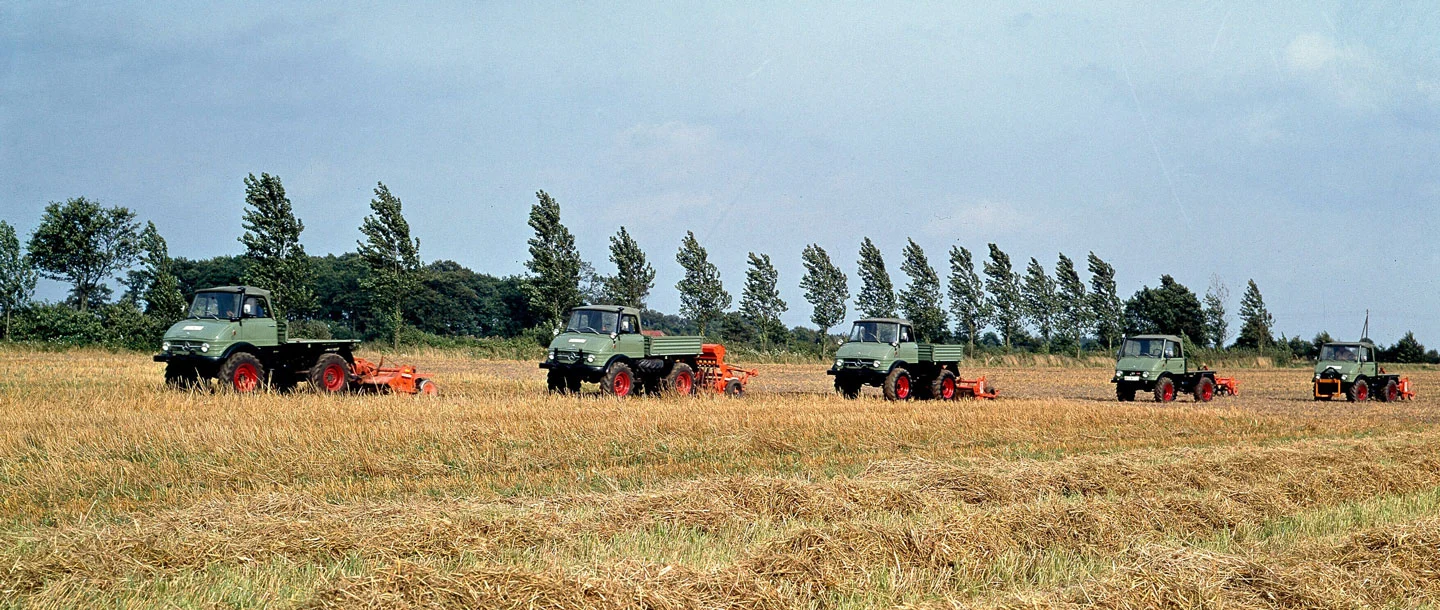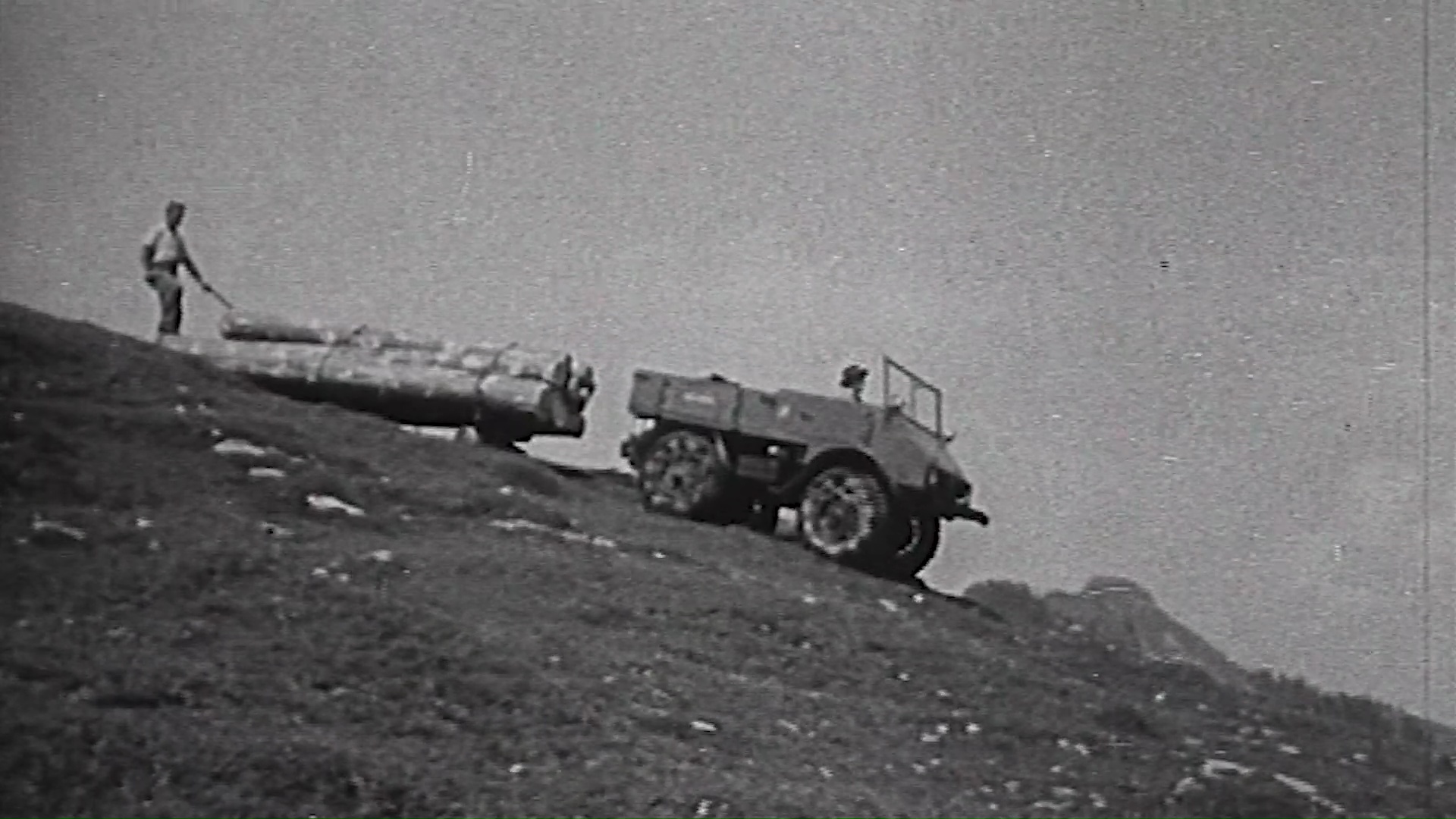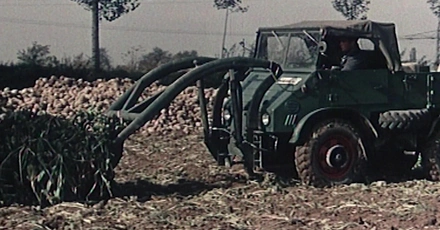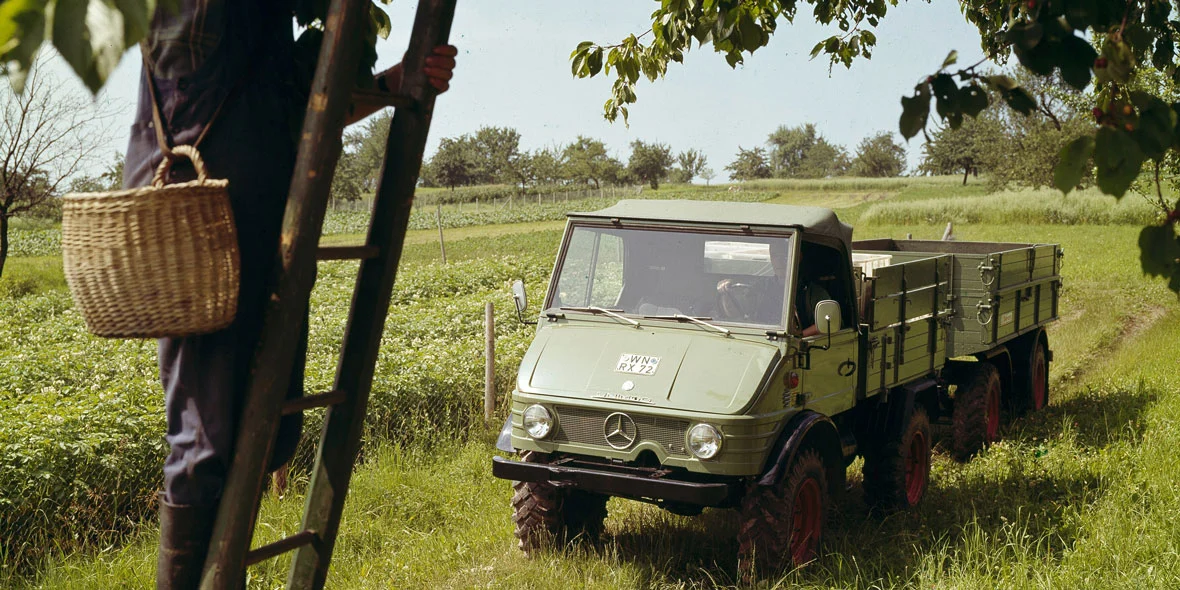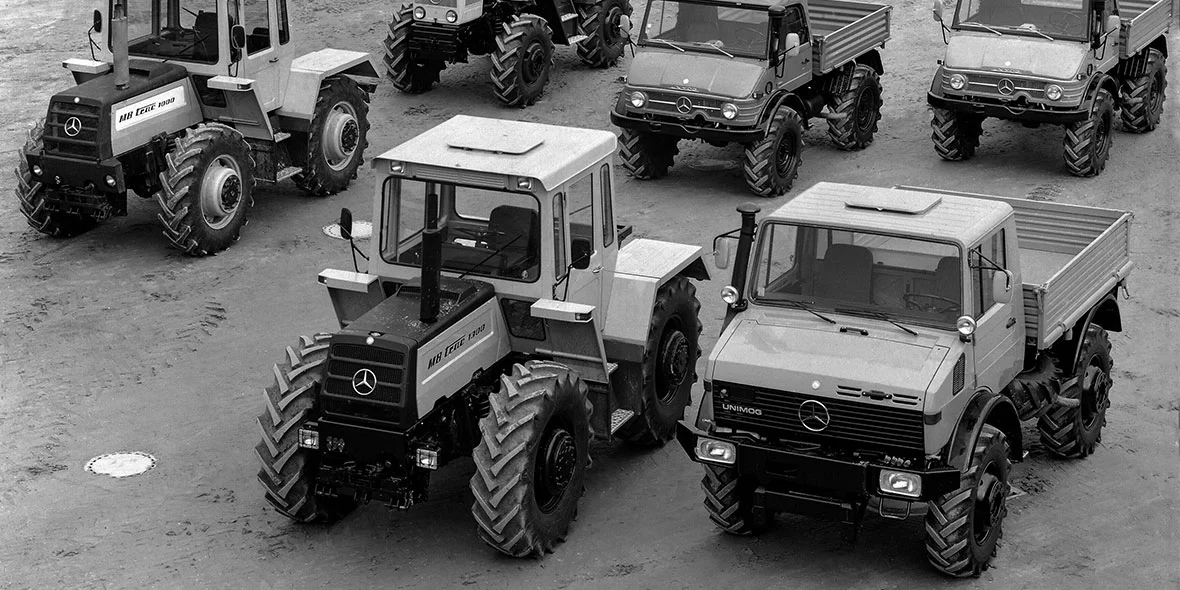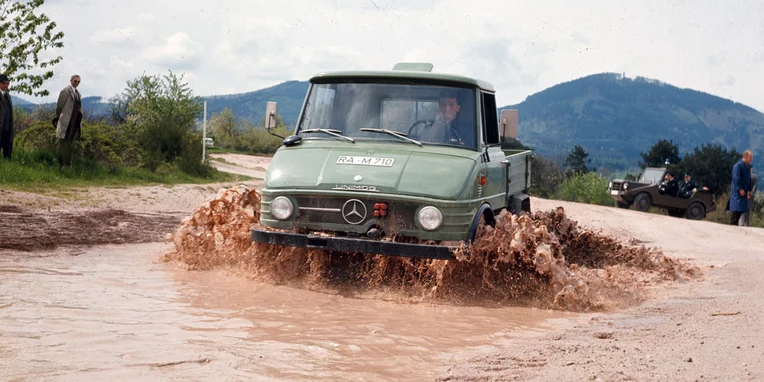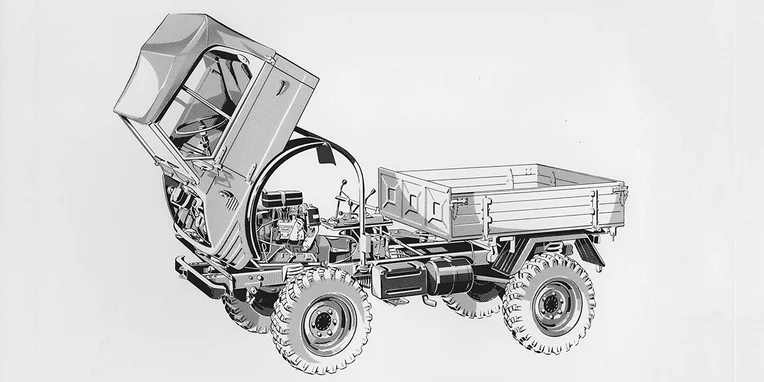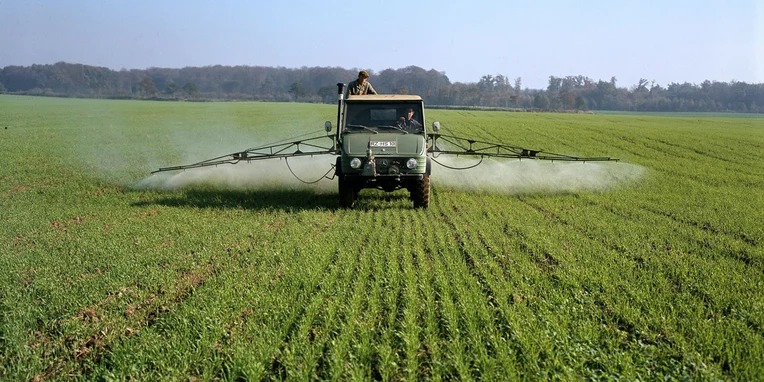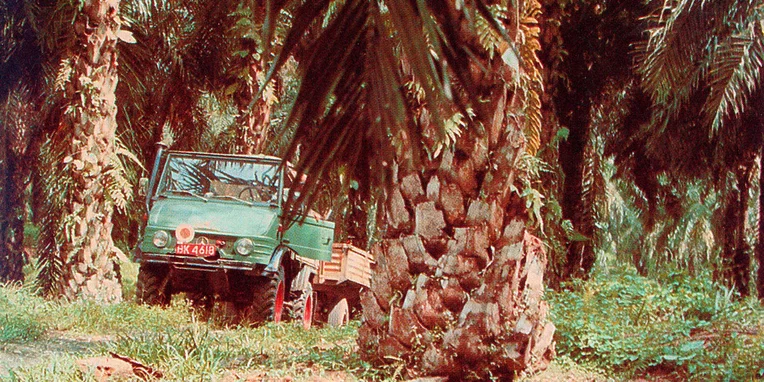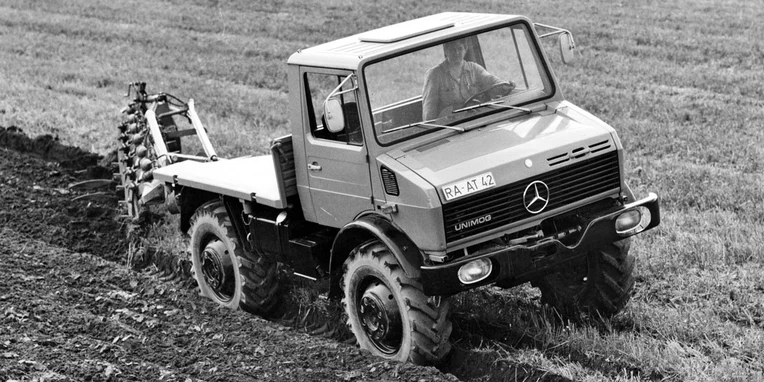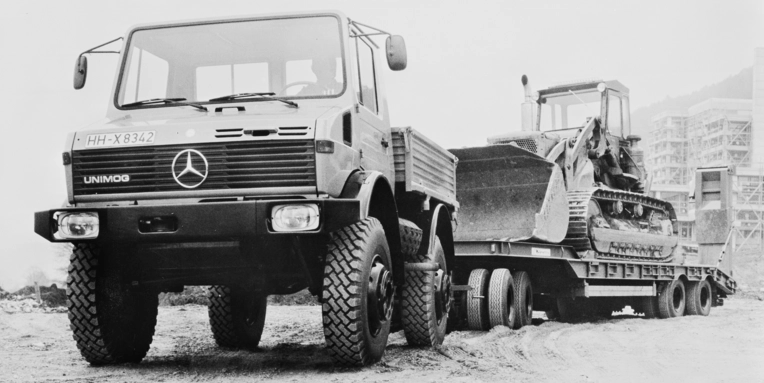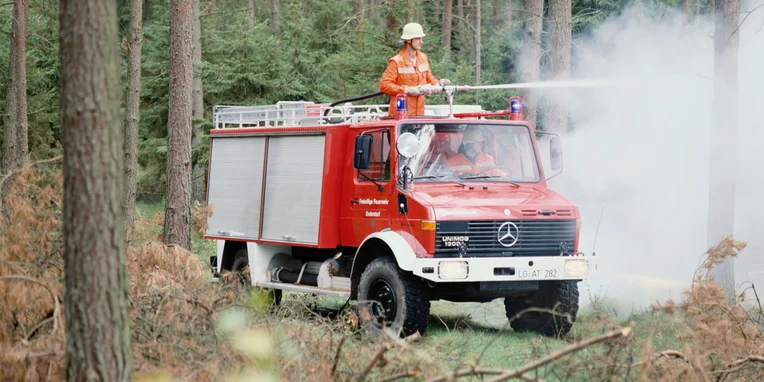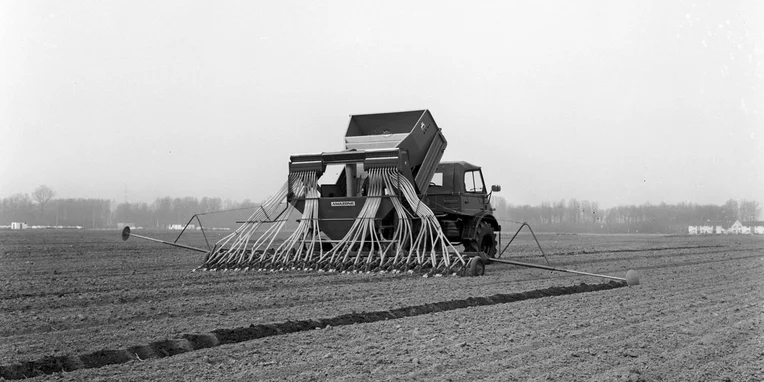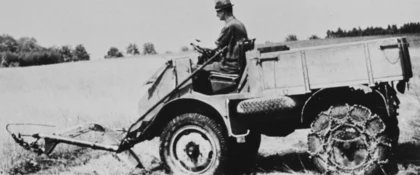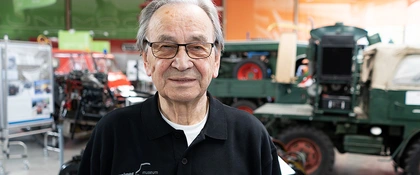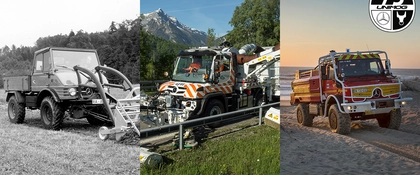1966–1975 | Start of light- and heavy-duty Unimog model series.
On the occasion of the 75th birthday of the Unimog we present you some of the key models and developments in its successful history. This chapter on the third decade of the Unimog illustrates how the new model series were created and milestones in the production figures were reached.
More than just a facelift: the Unimog U 421.
Twenty years after the first Unimog prototypes were built and ten years after the launch of the successful model series 411, in January 1966, the Unimog U 421 heralded the launch of a new model series – later also described as the "light-duty model series". It aimed to close the output and weight gap that existed back then between the successful 406 model series (available from 70 hp) and the 411 model series (with 34 hp at the time). Originally designed for passenger cars, the OM 621 was initially available in a 40 hp variant, and output increases up to 60 hp followed later.
Components from the U 411 were largely used for the Unimog U 421, which also explains the visual similarity. Not only did this bring business benefits; it also ensured that it was possible to reuse bodies and implements in many cases. The ingenious feature of the new light-duty model series: it was possible to fold up the cab forwards in just a few steps, which made maintenance work on the engine much easier.
The Unimog 411 series adds extra performance.
Model series 421 proved to be enduringly popular and was produced for over two decades up until 1988. It is among the most successful Unimog model series of all time, with nearly 19,000 vehicles.
